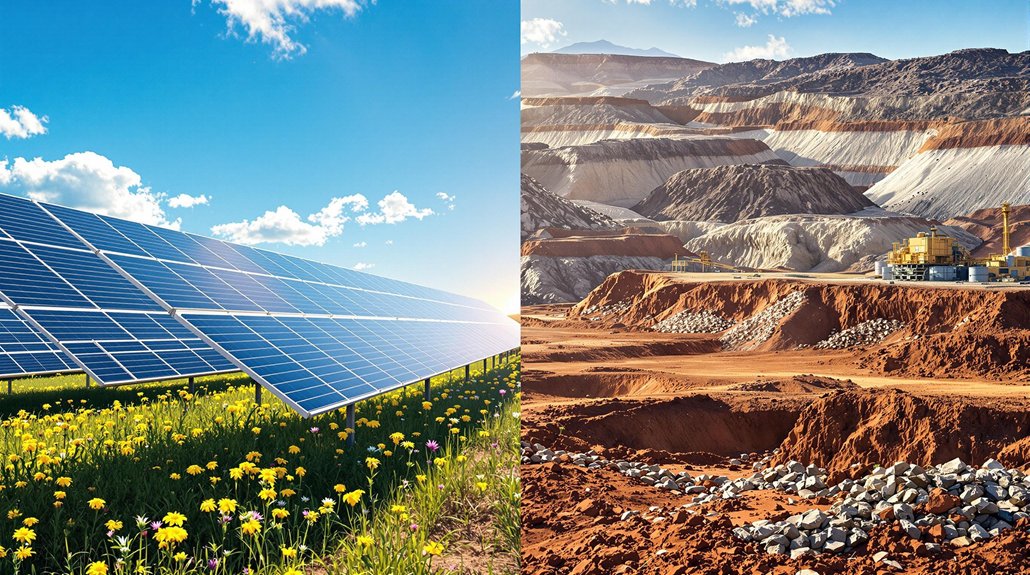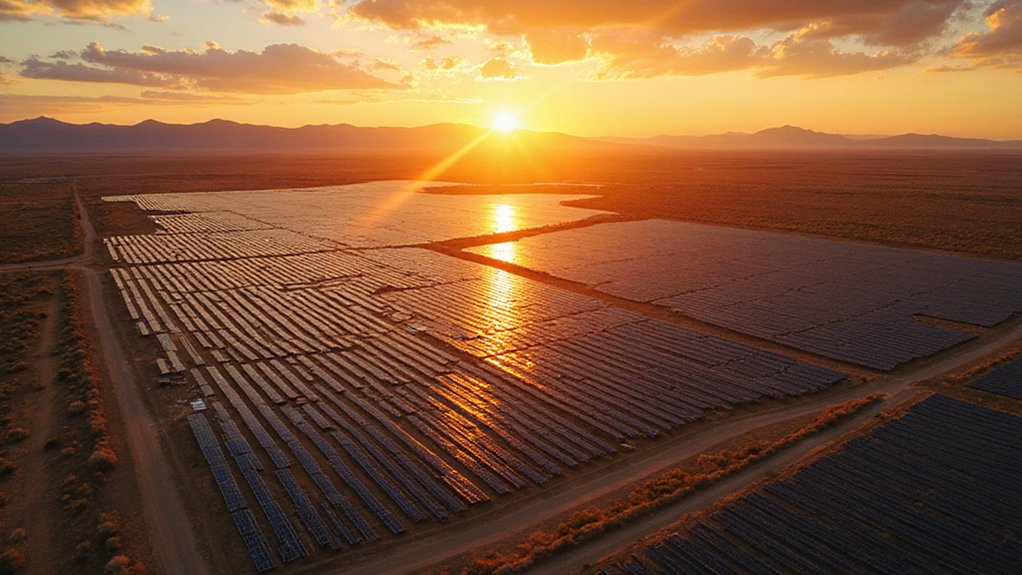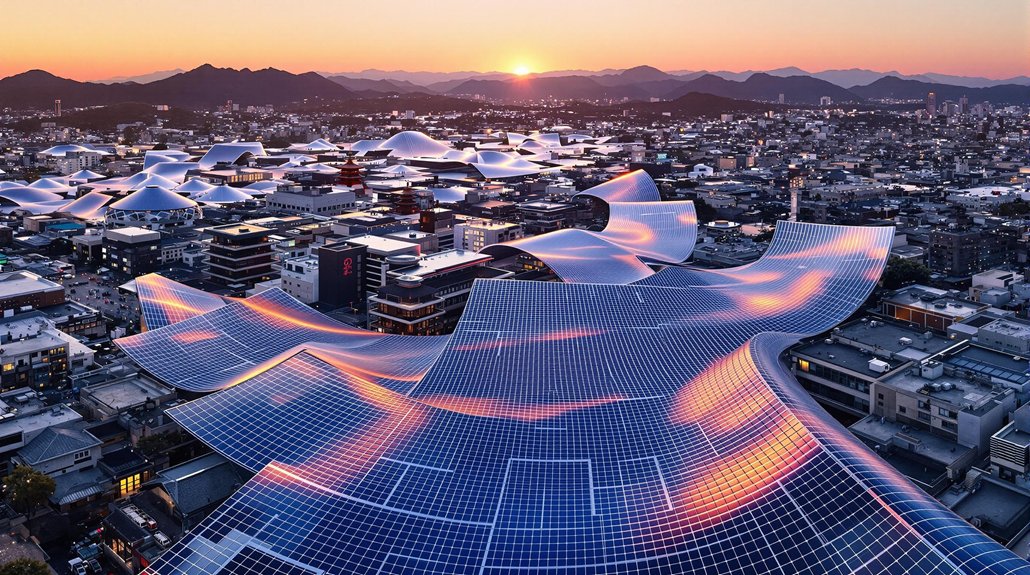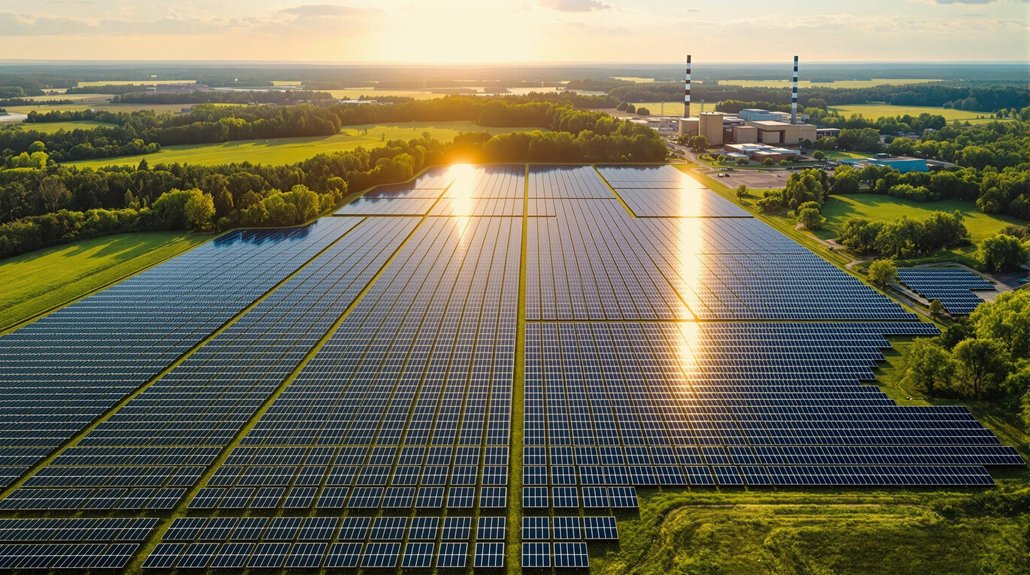Solar panels have become a symbol of clean energy across the world. They don’t emit greenhouse gases while generating electricity, yet questions remain about their environmental footprint. The manufacturing process requires mining rare materials and can produce toxic waste. Large solar farms may disrupt natural habitats. Still, recent innovations in recycling and production methods suggest solutions are emerging. The debate continues: Are solar panels environmental heroes or do their hidden costs outweigh their benefits?
Solar panels have gained popularity as clean energy champions, they face increasing scrutiny over their complete environmental footprint. Solar technology offers clear benefits once installed—producing electricity without greenhouse gas emissions during operation. This helps improve air quality and public health by reducing air pollution that comes from burning fossil fuels.
The numbers tell a compelling story. Solar panels have a carbon footprint 12 times smaller than natural gas and 20 times smaller than coal for each kilowatt-hour generated. After just 1 to 4 years, panels recover the energy used to make them. They then operate carbon-neutrally for the remaining 86-96% of their typical 30-year lifespan.
Solar’s carbon footprint: 12x smaller than gas, 20x smaller than coal, with energy payback in just 1-4 years.
Manufacturing does create environmental concerns. Production requires mining rare earth materials, which impacts local environments and communities. Some panels contain hazardous materials like cadmium and lead that need careful handling. The industry is working to address these issues through better recycling technologies and more sustainable sourcing practices. Innovative materials like perovskite solar cells are being developed as cheaper, lighter, and more efficient alternatives to traditional silicon-based panels.
Land use presents another challenge. Large solar farms can disrupt habitats, especially in sensitive ecosystems. Many developers now prefer installing panels on existing structures like rooftops or in already-disturbed areas like brownfields. This approach minimizes habitat loss while still capturing solar energy. The versatile installation options allow solar panels to function as mini power plants in diverse locations without consuming pristine natural areas.
Water usage in solar is relatively low compared to fossil fuels. While manufacturing does require water, solar panels don’t need water to generate electricity once installed. This gives them an advantage over many traditional power sources. However, solar systems still require approximately 20 gallons of water per megawatt hour for cleaning and cooling purposes.
The end-of-life management of solar panels is an emerging issue. By 2050, the U.S. could generate up to 10 million tons of solar panel waste annually. Developing efficient recycling systems will be essential to prevent these materials from becoming an environmental burden.
Despite these challenges, the overall environmental profile of solar energy remains positive. As production techniques improve and recycling becomes more common, solar’s already significant environmental advantages over fossil fuels will likely grow even stronger.








